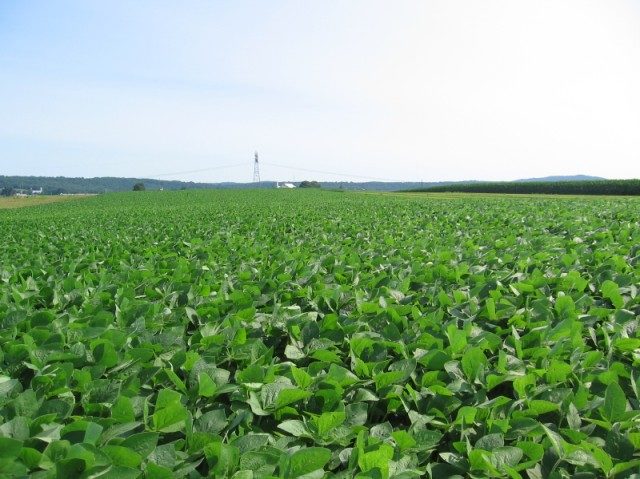The USDA's National Agricultural Statistics Service released the 2022 prospective planting report Thursday afternoon.
Among the notable takeaways: farmers are expecting to plant more soybeans than corn this year, the first time the second staple crop has outpaced corn in two decades, according to the report. Farmers plan to plant 91 million soybean acres this spring, as opposed to 89.5 million corn acres.
Corn and beans have been on parity before: from 2017 to 2018, the number of soybean acres and corn acres was approximately equal, according to past USDA data.
The total represents a record for soybean acres in the United States, and might suggest growers are seeking a lower-input alternative to corn crops amid rising fertilizer prices.
The top 5 states decreasing corn acreage are Minnesota, North Dakota, Wisconsin, Indiana, and Kansas. Minnesota farmers said they plan to plant 600,000 acres less of corn in 2022 compared to 2021. North Dakota farmers said they plan to plant 500,000 acres less of corn, and Wisconsin, Indiana, Kansas, Illinois and Iowa farmers plan to plant about 300,000 acres less of corn each.
The corn decreases are off-set by increases in soybeans. Illinois, Missouri, Minnesota, Iowa and Tennessee producers are the the top increases. Illinois and Missouri farmers plan to increase soybean acres by about 400,000. Minnesota farmers plan to plant 350,000 more acres in soybeans in 2022. Iowa and Tennessee farmers plan to plant about 300,000 more acres to soy.
Texas, Kansas, North Dakota, Oklahoma, and New York show the largest decreases in overall cropland. Together, producers in those five states plan to decrease plantings by 1.8 million acres.
Missouri, Montana, South Dakota, North Carolina, and Wyoming show the largest planned increases in total cropland. Those states combine to show a planned increase of 2.1 million acres.
The USDA data contrasts with a prospective plantings report issued by the Farmers Business Network, which reported exactly the opposite projections: an estimated 89 million acres of soy and about 91 million acres for corn.
The USDA survey uses 73,000 respondents, while the FBN survey is based on 2,000 respondents from among its estimated 36,000-farmer membership.







